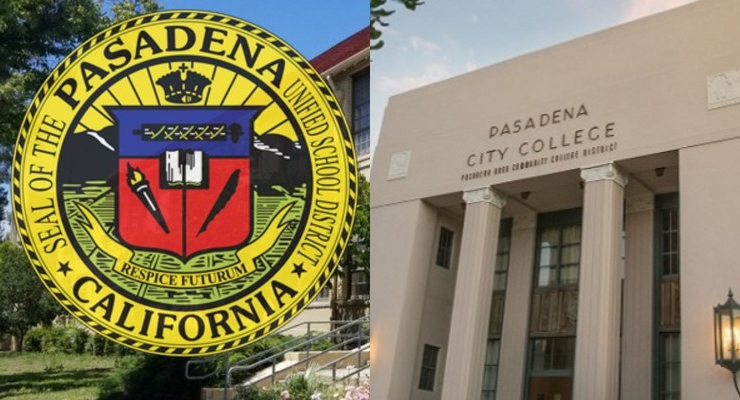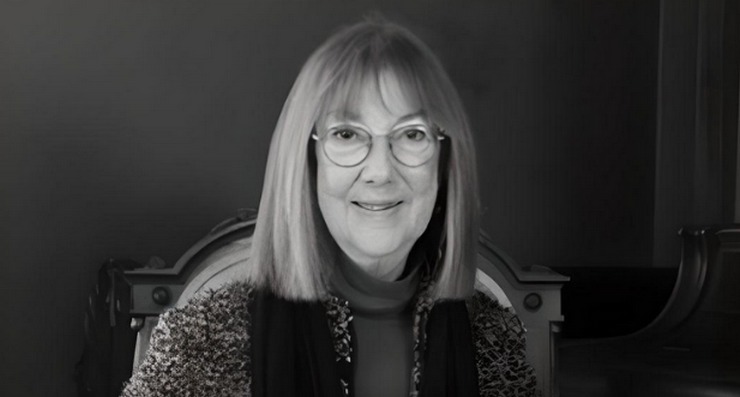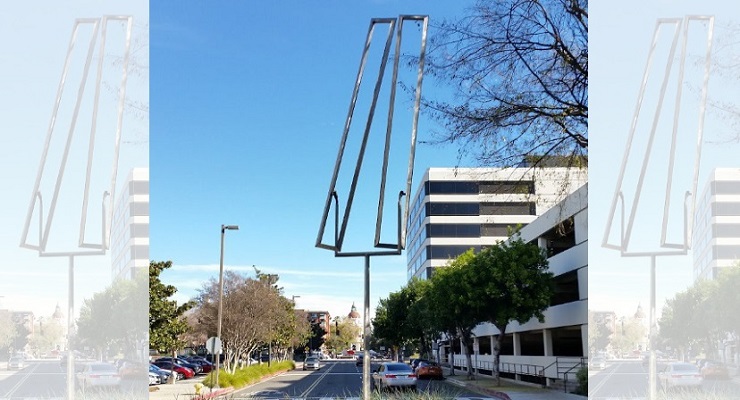
Pasadena’s Arts and Culture Commission will review and possibly approve the relocation of kinetic sculptor George Rickey’s “Two Open Rectangles Excentric VII, Triangular Section” to the Parsons campus, at 100 Walnut Street, during a special meeting at 2 p.m. Thursday, Dec. 10.
The 25-feet-high abstract steel kinetic sculpture was created in 1977 and consists of two movable rectangular forms mounted on a two-pronged fork element and set in a concrete base. The sculptural forms rotate on precision bearings that were devised by the artist. It is recognizable in style to several of Rickey’s rectangular kinetic works that have been exhibited and installed throughout the United States.
“Two Open Rectangles Excentric VII, Triangular Section” was initially installed on Walnut Street in 1978 – at the entrance to the Parsons headquarters – and relocated in 1982 to the west side of the intersection of Holly and Leonard J. Pieroni streets.
Because the Parsons Master Plan construction, now underway, includes the extension of Holly Street from Fair Oaks Avenue through to Pasadena Avenue, the temporary removal and storage of the sculpture was required until it could be relocated.
A report by Pasadena Cultural Affairs Manager Rochelle Branch said Lincoln Properties worked with the Pasadena-based fine art services company Curatorial Assistance to remove and store the sculpture.
Branch is recommending that the Arts and Culture Commission approve the relocation.
Lincoln Properties purchased the Parsons campus in June 2013, and the City Council approved their Parsons Master Plan on April 27, 2015. Lincoln Properties indicated they were planning to relocate the sculpture, according to the terms of the development agreement, and the Arts and Culture Commission was informed of the plan in January 2017.
At the time, the Cultural Affairs office found that the temporary removal and storage of the sculpture was an appropriate and necessary step. Staff also advised Lincoln Properties to consider a new location that will provide increased visibility of the sculpture for pedestrians and vehicular traffic along Walnut Street, as well as for visitors and residents of the new mixed-use development.
Internationally renowned artist George Rickey was born in Indiana in 1907. He was raised near Glasgow, Scotland, and took drawing classes at the Ruskin School. He later studied painting in Paris.
In World War II, Rickey served in the Army Air Corps testing computing instruments used by bomber gunners. The work required both mechanical skill and an understanding of the effects of wind and gravity on ballistics – thus providing the foundation for his transition from painting to kinetic sculpture.
Rickey later studied at New York University’s Institute of Fine Arts and the Institute of Design in Chicago. Influenced by the kinetic mobiles of Alexander Calder, Rickey began creating his own kinetic sculptures in the 1950s and 1960s, and developed systems of motion that responded to the slightest variation in air currents.
Over several decades, he refined his works to include an emphasis on lines, planes, rotors, volumes, and churns, shifting from simple oscillation to conical gyrations. Rickey developed large-scale works in this style for sites in the United States, Europe, and Japan.
For more information about his works, visit the George Rickey Foundation’s website, www.georgerickey.org.




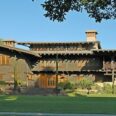







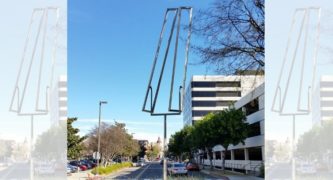

 0 comments
0 comments

